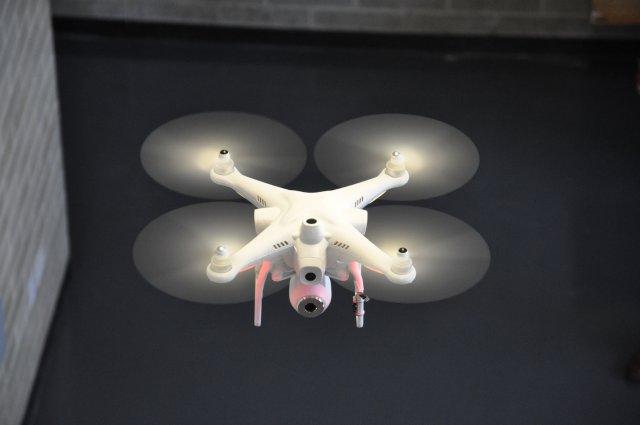is a subsidiary and new arm of Aurora Flight Sciences. The division is working to develop avionics for commercial unmanned aircraft platforms with the ability to act as the “brains under the hood,” helping the aircraft to see and avoid obstacles in its path. The manufacturer’s first such solution, the eBumper, is an integrated set of sensors and avionics designed as a retrofit kit, which the company will eventually be able to modify to any small consumer quadcopter that commercial UAS operators use for lower scale applications, such infrastructure inspection or videography.
“If, for example, you’re inspecting a roof or a building with an unmanned aircraft, the operator is interested in not hitting that roof and actively trying to not do so. But at times there could be a wind gust or an erroneous user input which will push the aircraft in the direction of that roof or of that wall. The eBumper is going to be there to actively prevent that from happening,” said Kunzi.
Currently, Panoptes has made the eBumper available for the DJI Phantom 2 Unmanned Aerial Vehicle (UAV). By adding sensors in the front, left, right, and on top of the small quadcopter, the eBumper detects obstacles in the field of view and initiates a stopping maneuver to avoid any oncoming collisions.
Panotpes UAV is also currently working with an undisclosed operator that is using the eBumper to apply for an FAA Section 333 Certificate of Authorization (COA) for infrastructure inspection. However, Kunzi sees the eBumper really as the first step toward an ultimate goal of producing a large scale sense-and-avoid system scalable to multiple commercial UAS platforms that provides autonomous collision avoidance for BLOS operations.
“We see the eBumper as more of a pilot assistance tool, providing an enhanced safety benefit for lower scale commercial unmanned aircraft applications, such as the type that the FAA was looking to regulate with its recently proposed set of regulations,” said Kunzi. “The other piece we’re working on is the long range obstacle detection and avoidance solution that we’ll need for faster and more complicated flight at low altitudes. In order to do that from an engineering perspective, look at the physics: you need about 50 to 100 feet in range to see an obstacle out in front of the aircraft and have it be able to stop in time or do something in time to prevent a collision. That’s still several years away, but its what will be necessary to deploy more complicated commercial UAS operations in civilian airspace.”
Panoptes is not alone in its development of sense and avoid systems for large and small-scale commercial applications either. While sense-and-avoid technology has been deployed for some time on larger and smaller military UAS, developers are now looking to bring this capability into the commercial realm.
For example, Airware, creator of hardware, software and cloud services for commercial UAS, is working with NASA on an Internet-based system that would provide operators with information about oncoming obstacles, such as physical obstructions based on the flight plan they filed. California-based UAS tech startup Skydio has a team of MIT engineers — the founding team of Project Wing at Google[x] — working on a sense-and-avoid system that relies on computer vision. During his keynote speech at the 2015 International Consumer Electronics Show (CES), Intel CEO Brian Krzanich showed the ability of Ascending Technologies’ Firefly UAS to autonomously sense and avoid contact with human beings that were five to 10 feet away.
Currently Kunzi and Panoptes are working on scaling up their manufacturing capabilities so that they can make the eBumper more widely available by late 2015, according to Kunzi. However, the long-term goal is to produce a much more complex and smarter version of the eBumper.
“With completely autonomous BLOS sense and avoid, that’s when it starts to get interesting,” said Kunzi. “We have the brains under the hood to enable that, but we currently are taking it one step at a time. We’re starting to crawl, we’ll hopefully be walking within a year and we’ll talk about sprinting within one or two years of getting this one mile plus or two mile plus range of detecting targets and uncooperative aircraft so that we can enable safe commercial operations at low altitudes with unmanned aircraft.”
Source: Aviation Today

